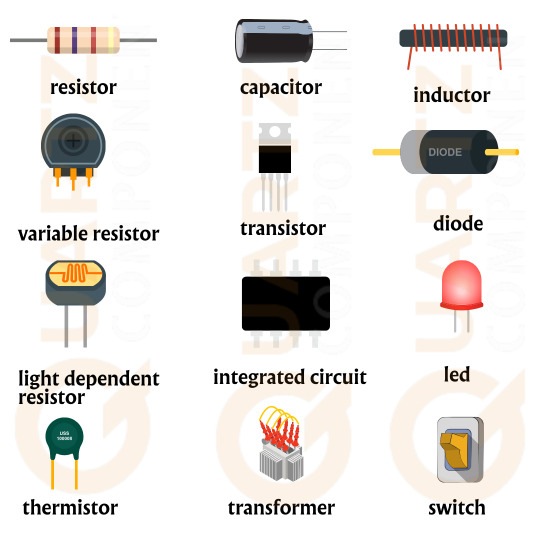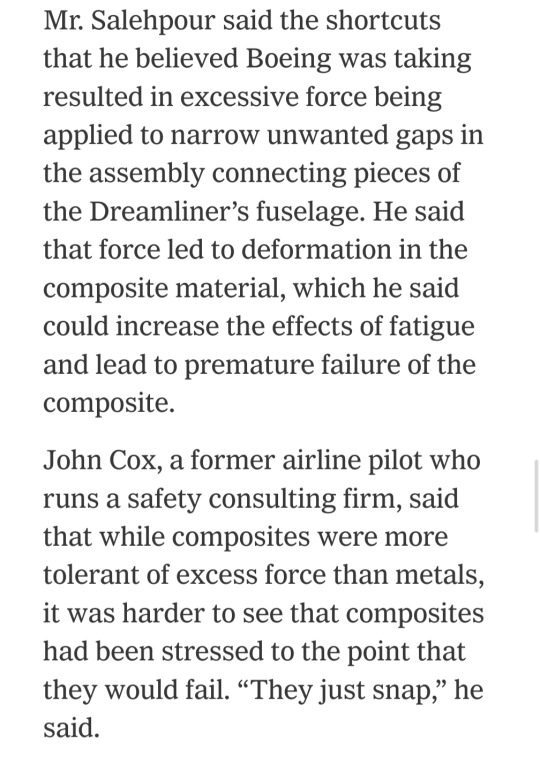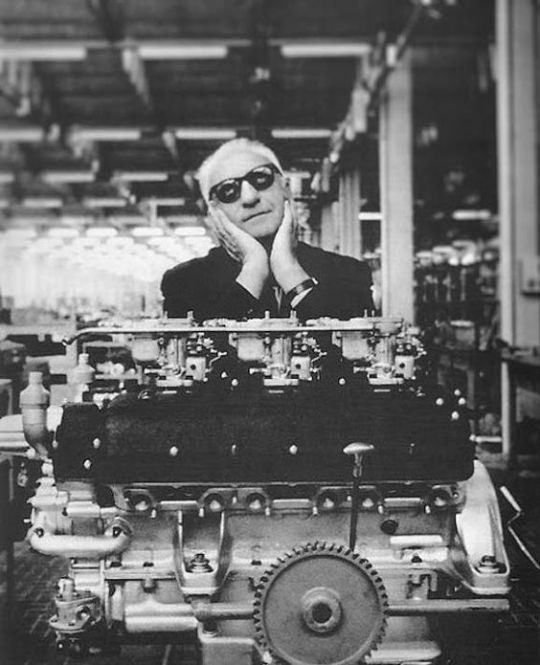#engineering & manufacturing
Text
@kodedgeekthings eyo you mentioned wanting a dpxdc prompt for Howard, Batman’s mechanic!
Harold misses fixing toys for kids and in his off hours has taken up the habit of answering questions on forums about machining, electrical, engineering, mechanics, and mechanical design that are often frequented by students.
One day, he comes across a request by a college student who is trying to assemble his own car out of scrap he bought from a local wrecking yard.
Ghostly_Boy states that he has previous experience in machining and can make replacements for broken or too-damaged parts if need be, but he doesn’t know where to start and what specific requirements he needs to reach to ensure it’s street legal.
Harold willing to help, he answers a few of Ghostly Boy’s clarifying questions:
- Great questions!
It’s good to note that if you’re not careful, fixing or making your own car from parts can be a moneysink and can cost you more than a brand new vehicle. - That being said, your first major step to ensuring you can drive the car is to get the title of the body/frame of the car you plan to build. It’ll have the VIN on a plate welded to the frame usually near the lower edge of the windshield wipers on the drivers side. It’s how the DMV identifies vehicles for licensing.
- Generally, you’ll at first get a “wreck out” title that shows the vehicle is listed as a total loss, but if you can assemble the parts for the car with that frame, the DMV can check if it’s properly running and road worthy & license for you to use it on public roads if you’ve done the proper paperwork.
- Once that is done, it’s largely a case of getting the right parts and assembling them. Depending on how much you have to repair, you could be taking on a task that could give a challenge to even a seasoned mechanic. There may be additional paperwork depending on what exactly you need to repair, like the breaks, lights, steering, etc.
- If you want to build the car entirely from scratch, chassis and all, that’s an entirely different story with a much more complicated list of requirements to make it street legal, so getting a frame from a junkyard is a great first step!
- Make sure to keep all bills of sale, junkyard receipts, invoices and manufacturers’ certificates on any major parts you used in building the vehicle to prove its road worthy to the DMV when it’s complete!
Harold doesn’t always answer first but over time he’s found the adventures of this kid amusing and keeps up with it.
Ghostly_Boy keeps the forum updated with his progress:
The kid spontaneously deciding to scrap the wiring system and make his own in a span of 3 days, leaving experienced mechanics on the forum practically screaming at the kid for his updates showing him using random wires he salvaged and pigtailing them together to get the length of wire he needed.
Mixing not only multiple types of wires but ones that didn’t have the protection needed for auto use. DIY-ing his own relay and fuses he didn’t have and connecting the wrong grounds and switches. And planning on leaving the wires unwrapped and loose.
Leaving Ghost to promptly redo the wiring, correctly this time, within 78 hours.
Making a repair of a massive rusted hole on the passenger side by the bumper and the front tire via cutting 1/2in past the rust, grinding it pretty and clean, tac & seam welding the vintage aluminum housing material of a toaster to cover the hole to the response of Harold and many others in the forum just going “… I guess that would work?”
Harold and many others telling the kid that this “ectoplasm” material wasn’t cleared through the EPA’s Clear Air Act and could be illegal to drive with it as it’s fuel source unless he got the emissions tested & the center of gravity of the car adjusted to have the center of gravity a gas car has, it wouldn’t pass Federal Motor Vehicle Safety Standards. Nor would the previously untested on material make it easy or quick to get an Emissions testing certificate. Best to just stick with gas.
Removing what he thought was a “skid plate” that turned out to be another rusted out section on the frame on the bottom of his car and repairing it with steel he salvaged from an old medical table he had laying around. (To the multiple slightly confused commenters asking how Ghost had a spare medical table, he replied, “eh, my folks visit every so often and they’ve been giving me things they’re clearing out of the house so they can move closer to my older sister. I just so happened to get the ye olde medical table. They’re an odd couple of folks but that’s why I love them.”)
People just crying at the kid to go to rockauto.com and just buy the damn parts he needs for his car. (A good resource btw)
The kid kept cutting corners to save cash but through the badgering of Harold and many others that he actually would have to spend money to make this car be safe to drive in, he finally got it completed.
Ghost’s post of him leaving DMV waving the updated title to the car in its envelope in the air, titled, “THE DMV FINALLY SAID IT WASN’T A FIRE HAZARD! ONLY TOOK 2 YEARS! THANKS EVERYONE!” Got the most amount of responses he’d ever had with congratulations from lurkers and previous commenters.
Over the course of those two years, Danny learned how to draw his own wiring diagrams, properly solder and weld, and learning to actually plan out his projects so he got it right at least the fifth time instead of the 20th. Not bad for a kid that went straight from graduating high school with a 1.5GPA to construction jobs.
But after finally getting the car approved, Ghostly_Boy returns to the forum with a new problem. Lamenting that his parents keep coming over and “modifying” his car to no longer make it street legal.
At this point, about half of the answers to the submission think it’s either a joke project taken very, very seriously with a good chunk of money behind it, or a kid with parents that have narrowly avoided falling completely down the mad scientist rogue rabbit hole.
After all, what sort of parent would think that the DMV would approve to “anti-ghost missiles” being attached to the outer body of the car? Either way, the submissions always had video attached showing a demonstration, proving that Ghost wasn’t just completely yanking their chain. And a good amount of money would have to be sunken in to not only pay for the fines Ghostly continued to get from the additions to his car, but to actually manufacture and make a unique working product for each plea for help request.
Harold is not only taking notes on some of these defense measures but also decides to bring up the boy to Alfred. Intrigued, they together keep an eye on Ghostly_Boy. Bruce may be their employer, but they can handle a case or two on their own.
- I wanted Danny to try to make smth for himself now that he doesn’t have access to his parent’s lab anymore but he also doesn’t have access to ectoplasm so he’s fairly unfamiliar how to wire things Not for ectoplasmic standards.
Also I wanted to make a prompt where Danny had a good relationship with his parents & went into a fairly realistic job after high school with his fairly bad GPA so he’s saving up for a technical school via construction jobs as he doesn’t like the idea of working fast food for understandable reasons.
#dpxdc#bones writes#i have about 3 dozen ideas for dpxdc ideas to do with Howard#I’m going to be a manufacturing engineer.#i got so many ideas for this dude teaching one of the batkids or a visitor to the batcave about how cad programs work#& why he’s using x material for its purpose#instead of y material#like this dude could just be any of my automation profs
309 notes
·
View notes
Text

ozone
#had to fix this one before posting it#was supposed to be included in the last post - but didn’t exactly fit with the other images thematically#this building/sector is at the mouth of the entire park — I think it’s spot that manufactures/cans/pumps compressed natural gas?? not 100%#and it’s LOUD. not this building specifically but the 4 dozen other factories and assembly plants that operate on this block#similar noise level to working ground services at an intl airport; the passive noise level is somewhat-distant jet engine at best#hard to capture that aspect in the image — I should do a field recording tho#anyways yeah - it’s fun to drive through the heart of the park at night and listen to the whirrs and groans of machinery#I want to capture more but obv being oblique with a camera in this area or making frequent passes warrants a little more sensitivity#I do not want to deal with cops OR well-meaning-but-misguided working class folk who open carry to their shift at Dangerous Chemicals INC#my art#webcore#internetcore#glitchcore#artists on tumblr#night photography#distortion#noise#art#y2kcore#abstract art#glitch aesthetic#artwork#abstract#industry#infrastructure#machinery
173 notes
·
View notes
Link
108 notes
·
View notes
Text

Heart of the Turbine, Photo by Lewis W. Hine, 1930
#photography#aesthetic#lifestyle#mens style#working man#industrial#worker#engine#engineering#black and white#30s#manufacturer
43 notes
·
View notes
Photo

Well you see i saw a rarepair poll going around the other day and my hand slipped (;´༎ຶД༎ຶ`)
#stubbornshipping#they're talking in simlish lol#honda has Ideas on how to improve the circuitry in the duel disk for durability#kaiba: u are so right (next day goes and overhauls manufacturing dept)#(head engineers in shambles)#(mokuba called in once again to mitigate gay impulsive business decisions)#kaiba seto#hiroto honda#seto kaiba#tristan taylor#ygo#ygo dm#yugioh#art tag
359 notes
·
View notes
Text
Researchers were running the experiment at Sandia when the discovery was made. They only meant to evaluate how cracks formed and spread through a nanoscale piece of platinum using a specialized electron microscope technique they had developed to repeatedly pull on the ends of the metal 200 times per second. Surprisingly, about 40 minutes into the experiment, the damage reversed course. One end of the crack fused back together as if it was retracing its steps, leaving no trace of the former injury. Over time, the crack regrew along a different direction.
87 notes
·
View notes
Text
My degrees came in the mail!! It's official now!!
10 notes
·
View notes
Photo

Roll Form Tooling Design & Manufacturing | Metform
54 notes
·
View notes
Text
Electronics Components
#components #electronics #engineering #electrical #arduino #electronic #innovation #design #robotics #electroniccomponents #raspberry #technology #manufacturing #industrial #gaming #school #learningbydoing #solar #bahrain #pc #pcb #budaiya #muhharaq #manama #engineeringforkids #saar #riffa #makersgonnamake #isatown #summerprogram

#Electronics Components#components#electronics#engineering#electrical#arduino#electronic#innovation#design#robotics#electroniccomponents#raspberry#technology#manufacturing#industrial#gaming#school#learningbydoing#solar#bahrain#pc#pcb#budaiya#muhharaq#manama#engineeringforkids#saar#riffa#makersgonnamake#isatown
9 notes
·
View notes
Text
Boosting Efficiency: The Role of ERP Software in Modern Manufacturing Operations
In today's fast-paced manufacturing landscape, efficiency is not just a desirable trait; it's a necessity. To stay competitive and meet the demands of the market, manufacturers must streamline their processes, optimize resource utilization, and enhance decision-making capabilities. This is where Enterprise Resource Planning (ERP) software steps in as a game-changer. In this article, we'll delve into the pivotal role of ERP systems in revolutionizing manufacturing operations, particularly in India's thriving industrial sector.

Understanding ERP for Manufacturing Industry
ERP systems for manufacturing are comprehensive software solutions designed to integrate and automate core business processes such as production planning, inventory management, supply chain logistics, financial management, and human resources. By consolidating data and operations into a unified platform, ERP empowers manufacturers with real-time insights, facilitates collaboration across departments, and enables informed decision-making.
Streamlining Operations with ERP Solutions
In the dynamic environment of manufacturing, where every minute counts, efficiency gains translate directly into cost savings and competitive advantages. ERP software for manufacturing offers a multitude of features that streamline operations and drive efficiency:
1. Enhanced Production Planning: ERP systems enable manufacturers to create accurate production schedules based on demand forecasts, resource availability, and production capacity. By optimizing production timelines and minimizing idle time, manufacturers can fulfill orders promptly and reduce lead times.
2. Inventory Management: Efficient inventory management is crucial for balancing supply and demand while minimizing holding costs. ERP software provides real-time visibility into inventory levels, automates reorder points, and facilitates inventory optimization to prevent stockouts and overstock situations.
3. Supply Chain Optimization: ERP solutions for manufacturing integrate supply chain processes from procurement to distribution, enabling seamless coordination with suppliers and distributors. By optimizing procurement cycles, minimizing transportation costs, and reducing lead times, manufacturers can enhance supply chain resilience and responsiveness.
4. Quality Control: Maintaining product quality is paramount in manufacturing to uphold brand reputation and customer satisfaction. ERP systems offer quality management modules that streamline inspection processes, track product defects, and facilitate corrective actions to ensure adherence to quality standards.
5. Financial Management: Effective financial management is essential for sustaining manufacturing operations and driving profitability. ERP software provides robust accounting modules that automate financial transactions, streamline budgeting and forecasting, and generate comprehensive financial reports for informed decision-making.
6. Human Resource Management: People are the cornerstone of manufacturing operations, and managing workforce efficiently is critical for productivity and employee satisfaction. ERP systems for manufacturing include HR modules that automate payroll processing, manage employee records, and facilitate workforce planning to align staffing levels with production demands.
The Advantages of ERP for Manufacturing Companies in India
India's manufacturing sector is undergoing rapid transformation, fueled by factors such as government initiatives like "Make in India," technological advancements, and globalization. In this dynamic landscape, ERP software plays a pivotal role in empowering manufacturing companies to thrive and remain competitive:
1. Scalability: ERP solutions for manufacturing are scalable, making them suitable for companies of all sizes – from small and medium enterprises (SMEs) to large conglomerates. Whether a company is expanding its operations or diversifying its product portfolio, ERP systems can adapt to evolving business needs and support growth.
2. Compliance: Regulatory compliance is a significant concern for manufacturing companies in India, given the complex regulatory environment. ERP software incorporates compliance features that ensure adherence to industry regulations, tax laws, and reporting requirements, minimizing the risk of non-compliance penalties.
3. Localization: ERP vendors catering to the Indian manufacturing sector offer localized solutions tailored to the unique requirements of the Indian market. From multi-currency support to GST compliance features, these ERP systems are equipped with functionalities that address the specific challenges faced by Indian manufacturers.
4. Cost Efficiency: Implementing ERP software for manufacturing entails upfront investment, but the long-term benefits far outweigh the costs. By streamlining processes, optimizing resource utilization, and reducing operational inefficiencies, ERP systems drive cost savings and improve overall profitability.
5. Competitive Edge: In a fiercely competitive market, manufacturing companies in India must differentiate themselves through operational excellence and agility. ERP software equips companies with the tools and insights needed to outperform competitors, adapt to market dynamics, and capitalize on emerging opportunities.
Choosing the Right ERP Software for Manufacturing
Selecting the right ERP solution is crucial for maximizing the benefits and ensuring a smooth implementation process. When evaluating ERP software for manufacturing, companies should consider the following factors:
1. Industry-specific functionality: Choose an ERP system that offers industry-specific features and functionalities tailored to the unique requirements of manufacturing operations.
2. Scalability and flexibility: Ensure that the ERP software can scale with your business and accommodate future growth and expansion.
3. Ease of integration: Look for ERP systems that seamlessly integrate with existing software applications, such as CRM systems, MES solutions, and IoT devices, to create a cohesive technology ecosystem.
4. User-friendliness: A user-friendly interface and intuitive navigation are essential for ensuring widespread adoption and maximizing user productivity.
5. Vendor support and expertise: Select a reputable ERP vendor with a proven track record of success in the manufacturing industry and robust customer support services.
Conclusion
In conclusion, ERP software has emerged as a cornerstone of modern manufacturing operations, empowering companies to enhance efficiency, drive growth, and maintain a competitive edge in the global market. For manufacturing companies in India, where agility, scalability, and compliance are paramount, implementing the right ERP solution can be a transformative investment that paves the way for sustainable success. By harnessing the power of ERP, manufacturers can optimize processes, streamline operations, and unlock new opportunities for innovation and growth in the dynamic landscape of the manufacturing industry.
#ERP software providers in India#Manufacturing enterprise resource planning#ERP systems for manufacturing companies#ERP system for manufacturing industry#ERP for manufacturing companies#ERP software for engineering company#ERP software for engineering companies in India#ERP software for engineering companies in Mumbai#ERP solution providers in India#ERP for manufacturing industry#ERP systems for manufacturing#ERP solutions for manufacturing#ERP software manufacturing industry#ERP for manufacturing company in India#India
7 notes
·
View notes
Text








construction - jersey city, new jersey - yashica mg-1 & 400 iso color film - developed at eliz digital & scanned with minolta dimage dual iii
#35mm#construction#building#concrete#architecture#infrastructure#engineering#technology#manufacturing#35mm photography#film photography#city photography#urban landscape#neon#hi viz#people#machines#machinery#mechanical#jersey city#new jersey
13 notes
·
View notes
Text
these are claims from a different whistleblower than the one that was totally not murdered by boeing
(disclaimer, im not an expert and this article doesnt go into a ton of detail on the specific issues, so i could be a lil off, these are very much non-expert speculation rambles. anyone who understands better, feel free to correct me/add more deets).
if im reading it right these claims get into the way boeing has been outsourcing more and more manufacturing of parts to other companies, such as for the fuselage (the plane body as a whole, big tube u sit in). if those parts dont quite fit together right (and keep in mind the margins of error on these things can be VERY small in some cases, though im not sure exactly how much wiggle room they got here), that can lead to too much stress on certain parts.

like, for example, if one part of the fuselage is just baaaarely too big for the next part it connects to, it might all seem to fit together perfectly fine, but every time it takes off and lands or goes thru compression cycles (that is when they take off and land, going from low pressure-high pressure-low pressure), it just puts a BIT too much pressure on where they join. and over the years, that pressure just adds up until theres microscopic stress fractures, which become slightly larger stress fractures, until they get big enough that once a plane reaches a high enough altitude theres a midair disentegration, which is. exactly as bad as it sounds.
(sidenote: compression cycles can be more important for determining an airplanes lifespan than flight hours. the usual metaphor is bending a paperclip back and forth until it breaks, how many times can you bend it before metal fatigue sets in and it just snaps. holding it in a more bent position however will take a lot longer to snap it generally.)
now to be clear, every single plane has an intended service life, and its well known that planes can only take so many compression cycles before they start to get really hard to maintain without going kablooey. a plane may be rated for like, idk, 50k compression cycles (so, taking off and landing 50k times before its retired, because after that its no longer worth the maintenance vs just making a new plane). but if it turns out that plane has some flaw in its build that means itll develop fatal stress factures at only 20k cycles, well. thats bad. not sure exactly how the schedule on looking for stress factures looks like for maintenece crews (do they do it regularly for all planes on a set schedule? do they only do it occasionally for new planes, and start to ramp up checks as the plane gets older? dunno!) but well. generally speaking, a plane having a fatal flaw that gives it an explosive midlife crisis is Bad. i would hope theyd catch it! but i dont know enough about the deets of fuselage maintenence to know the specifics.

and OH YAY COMPOSITE MATERIALS. now, before anyone gets too freaked out thinking about the uh. submarine. use of composite materials is actually far more common on planes than on subs for a buncha reasons. one, planes just generally undergo a lot less in terms of pressure (that futurama joke, "this spaceship can handle between one and zero atmospheres", vs subs that have to deal with tens to potentially hundreds of atmospheres) but also because apparently, for complicated material engineering reasons, composite materials work much better under tension (high pressure INSIDE pushing OUT, like airplane) than under compression (high pressure OUTSIDE pushing IN, like submarine). heres a vid from someone who wrote their masters on composite materials under compression if you wanna hear from someone slightly smarter on the subject. im not gonna pretend like i understand the full deets, but "composites do OKAY with tension" is enough for me, go read the fancy scientific papers if you want more.
now, so that people do freak out at least a little bit: hm. dont like that they are using Way More Composite Than Usual on this plane. how much is the usual? idk, i assume composites are much more popular with low altitude small aircraft (bc well, weight and less pressure worries), dunno whats considered normal for high altitude longhaul crafts. but, apparently, the dreamliner is "more than usual". which, yeah cool, lighter weight airplanes use less fuel which is better for longhaul flights. is it. well tested enough though???


...anyway. im not an engineer, idk the full Deets, but well. havin lotsa fun hearing the engineers talk about how the parts of the giant metal skybirds dont fit together quite right and theyre using materials that fail more catastrophically than metal with less warning, experimentally, and we dont quiiiite have the data to know if. its a problem. thats really fun! LOVE hearing about how much theyre outsourcing parts, given how bad quality control of things as tiny as the titanium in some bolts or a little bit of the engine blades being not properly vacuum forged has lead to catastrophic failure in the past, and knowing how important sourcing of parts in airplanes is. all VERY yay!
#boeing#airplanes#aircraft#flight#boeing 787#boeing 787 dreamliner#787 dreamliner#seriously the amount of incidents that were just like. 'oh this ONE SINGLE PART had a manufacturing defect'#u use bolts to small and the captain is sucked out of the windsheild (he lived tho dw)#the titanium in the engine blades has a small impurity and it Breaks causing uncontained engine failure and severes the hydraulics#oh a single part of this bit isnt lubed properly so it gets stuck and the plane ends up nosediving#but hearing that the FUSELAGE ITSELF may be improperly fitted is#What The Fuck#yeah no why just outsource your bolts when u can outsource the ENTIRE MAIN BODY#TO MULTIPLE COMPANIES#buzzy
5 notes
·
View notes
Note
Is Valentino switching his team to Yamaha in the coming years?
Rumours are definitely circulating. Apparently they are slated to make the switch to Yamaha in 2025 and become their main satellite operation with access to factory bikes. Yamaha needs a satellite team after RNF abandoned them for Aprilia and Tech3 abandoned them for KTM. I think Uccio said somewhere that they are trying their best to get a factory bike for Bezz in order to give him a better shot. Which makes sense because Bezz gave up a Pramac seat to be with them.
Unfortunately Yamaha is squeamish about making the switch from an in line engine to a V4 engine. Their argument being that they have used these engines forever and the other teams that use V4 have years of advantage on them. Which again, fair because engineering at the highest level is about how familiar you are with every little last detail and that experience only comes with time. Not likely that Yamaha will make big tech changes before 2027 and that's some time away. Interesting to witness for the VR46 operation because they have been incredibly lucky with a rider like Bezz who brings this massive wave of talent, and Luca who is sharp and great at communicating with engineers. Add to that the fact that Ducati has the most sophisticated simulation tools of any factory team. So you know, even though they were at par with Gresini, they were still able to furnish far better results.
Fingers crossed for their Yamaha years because Fabio Q has spoken extensively about how Yamahas just don't have the engine power. But I suppose the Rossi connect would get them more favour from the factory operation than they get currently. All in all, fingers crossed.
#asks#Bezz has only extended his contract by a year#lets see what happens#which other riders in the vr46 team are as talented and available to take the seat after Bezz leaves rlly :(#unfortunately high performance engineering is so crazy sooo crazzyyyy#motogp#vr46 racing team#japanese manufacturers are currently having their asses handed to them#does not help that their isn't a lot of money in motogp currently#yamaha racing
12 notes
·
View notes
Text
Elevate Your Electrical Systems with Radiant Enterprises – Premier Epoxy Insulator Manufacturers in India
Discover excellence in insulation solutions with Radiant Enterprises, the leading Epoxy Insulator manufacturer and exporter in India. Our commitment to quality extends to customized solutions, making us the preferred choice for tailored Epoxy Insulators that meet the unique needs of diverse industries. Trust Radiant Enterprises for superior craftsmanship, reliability, and innovation in every customised Epoxy Insulator manufacturer in India. Your electrical systems deserve the best, choose Radiant for unmatched quality and performance. With a legacy of precision engineering and a global footprint, we are dedicated to providing Epoxy Insulators that set the industry standard for durability and efficiency.
Partner with us for cutting-edge solutions that power a sustainable and connected future.

#Epoxy Insulator#Epoxy Insulators Manufacturers in India#Customised Epoxy Insulators Manufacturers in India#Epoxy Insulator Manufacturers in India#electrical company#electrical engineering#electrical industry#exportquality#innovativeinsulators#India
7 notes
·
View notes
Text

Enzo Ferrari
288 notes
·
View notes
